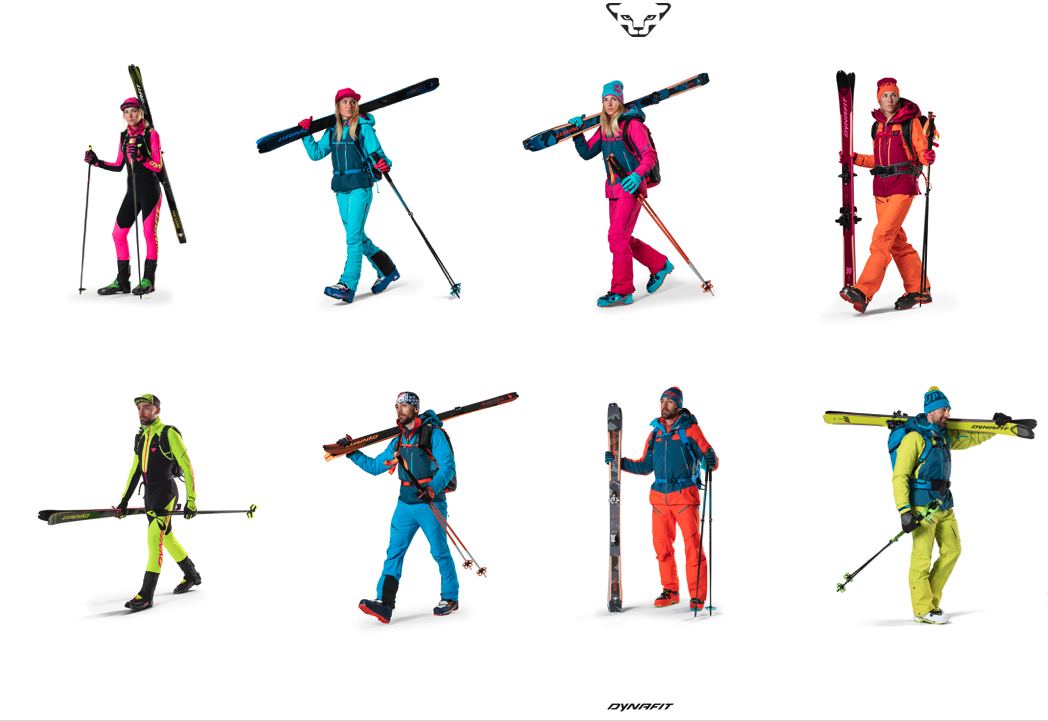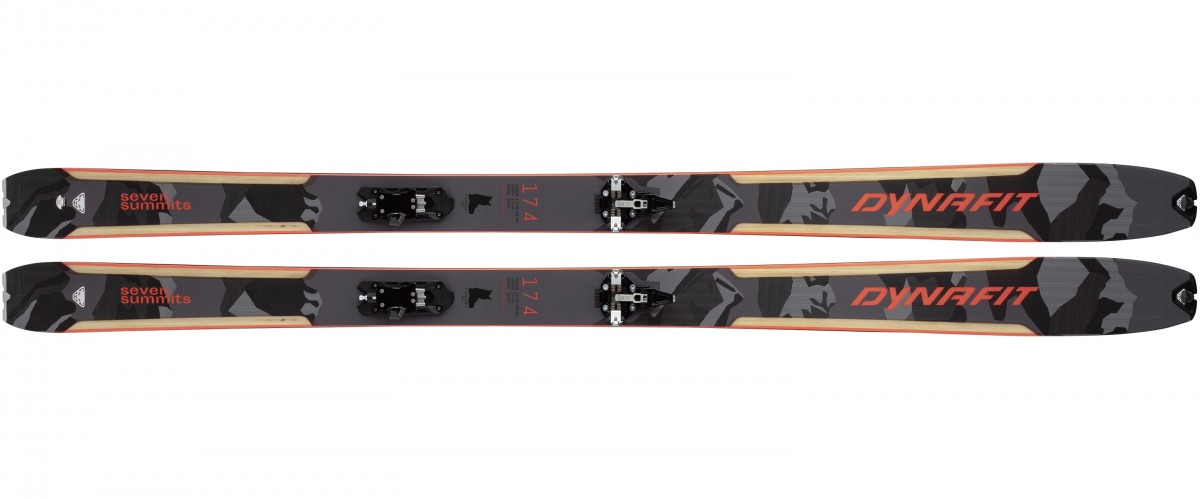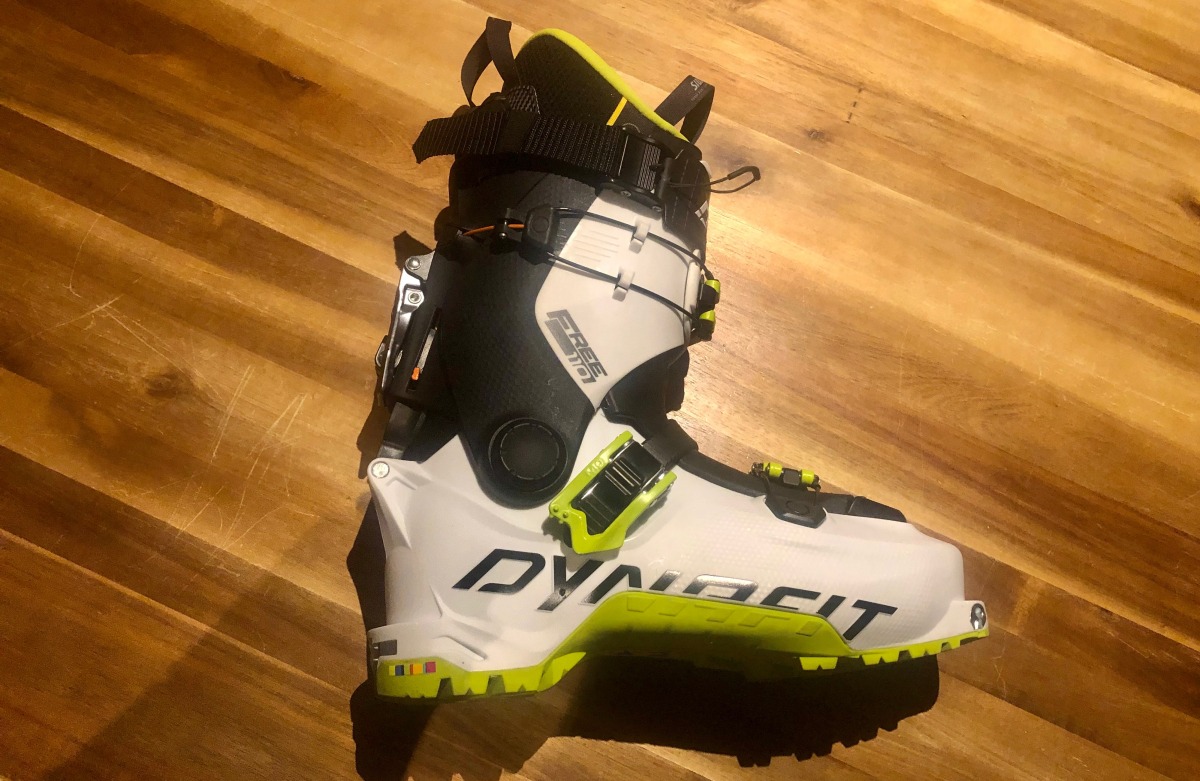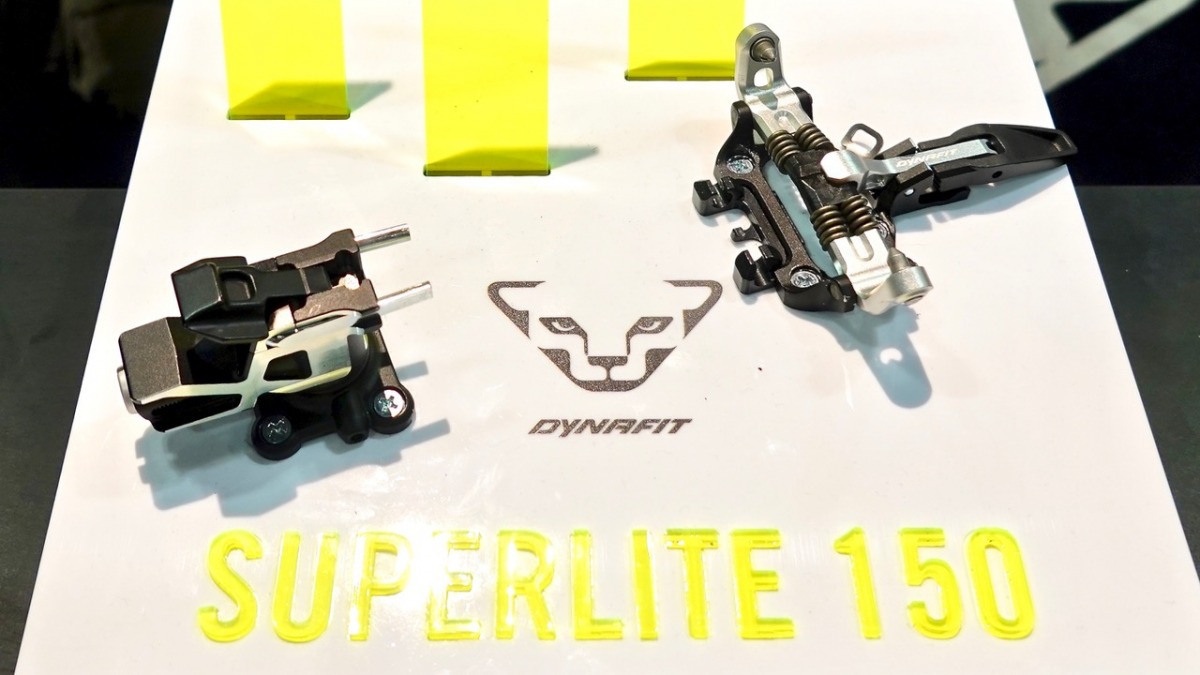
What color Power Ranger did you want to be? With matching boots, pants, jacket, poles, gloves and headband, Dynafit’s got you covered.
After getting one night tour on the new Blacklight Pro skis, I drove the wrong way down I70 to the A-Lodge outside of Boulder, Colorado for the full scoop on Dynafit’s new offerings for the 2020-2021 season. While the Blacklights are already available for sale in North America, this was a first time, pre-Outdoor Retailer peek at the rest of the latest innovations.
I had been to the A-Lodge once before when the Hoji boot was released to North American media, but this trip also marked 12 years since I was first brainwashed into the fast and light world at a Dynafit dealer camp in Keene Valley in the Adirondacks. At that young age, I was corrupted to set down the ultra wide powder ski and plate binding and find a better way up the hill. Dynafit’s message then was identical to what it is today: building complete solutions for the modern ski tourer, from boots, bindings and skis, all the way down to the flashy Euro-style puffy training skirts.
But this approach doesn’t always take off, particularly in the U.S. with our rugged individualist, “I’ll do it however I want” attitude. Dynafit has tried offering complete systems for the consumer many times in the past. The older Manaslu had plugs for mounting convenience, but also restricted binding use to only their own proprietary designs. The “Speed Nose” seen across nearly all of their boots ingeniously moved the pivot point back for a more natural stride, but also pigeon-holed the user into a narrower range of the seemingly infinite touring binding options on the market.
What’s the value of a comprehensive system designed and engineered to work together? At the least, it guarantees compatibility. At most, a well-designed system delivers efficiency and performance envisioned by a trained gear designer. With that ethos in mind, here’s a sneak peak at new individual products and slight tweaks Dynafit developed for 20/21.
Hoji Free 110
A highlight of next season is the Hoji Free 110. It offers a softer flex than its hard-charging older sibling while maintaining the mechanics and design that put the Hoji Free 130 on the map. The Hoji Free design represents a giant concession to the spirit of brand independence. The Hoji Free 130 is extremely stiff thereby forcing lighter Dynafit focused skiers to either commit to the $900 (but compatible) boot or to step down in stiffness and compatibility by opting for a speed nose model. The new Hoji Free 110 removes the question by offering the best of all worlds. It works well with a lightweight Dynafit binding, but you could also use a much heavier non-Dynafit touring binding or even in an MNC Alpine option.
In addition to a tuned-down flex, the 110 option plummets from $900 to $749, keeping it price competitive with other boots in its class. With the drop in price you are getting the same Sidas Liner and a shell with carbon grilamid cuff. The softer Hoji runs down to a 23.5, creating a unisex option for a crossover performance boot. Dynafit explained that they are focused on making their new gear for a specific activity rather than the gender of a skier, a trend we have seen growing across the industry.
Speed Superlite 150
Out of all the new gadgets from Dynafit for next year, I was most excited to see the updated Speed Superlite. Dynafit beefed up the toe, moving to a forged and then CNC milled toe piece with thicker metal around the screw holes, a previous point of weakness on the bindings. They were able to increase the strength of the toe, add the much desired “flat mode” for touring, extend the release value to a range of 5-13 all dropping the weight to an impressive 150 grams.
This offers the weight weenie in all of us a race weight binding with adjustable release value and a feature set beyond race style U-spring bindings. There is the same removable brake option, but with the addition you lose the flat touring mode. There is of course no adjustability between boot sole lengths with the addition of an adjustment plate. The price doesn’t budge an inch and remains at $549, but the hole pattern changes once again, but to a wider than ever heel pattern.
Although the heel has the impressive release value range for twisting releases, the vertical release is macro adjusted by buying an additional stiff U-spring that takes it from an approximate 8 upward into the unknown. These upgraded release value adjustments, although improved from a typical race weight binding, will still have some inconsistencies with release inherit in the U-spring style. If release consistency is your number one concern it will still be worth the weight penalty of heavier fully featured binding.
Blacklight skis and kit
We already wrote on the Blacklight first impressions and we are able spend an additional full day resort testing them. But Dynafit isn’t stopping with the ski. The Blacklight kit includes an ultra light, minimal Dyneema pack with ski carry, safety box, ice axe hook and not much else. The pack has a roll top enclosure with one additional side zipper to access the main cavity.
As Dynafit knows better than anyone, you have to look fast to ski fast and if your skis, boots and pack all match you shouldn’t stop there. Completing the kit, the Blacklight fixed length carbon poles feature an extended foam grip and a kevlar reinforced bottom where you are most likely to smack your own edges or a loaded tree branch in front of you on the skin track. This kevlar reinforcement was pioneered in their trail running poles which constantly get jammed in rocks and keep the carbon from splintering.
Seven Summits Pre-Mounted Ski Setups
The epitome of a full system approach: a ski, binding and skin combo that arrives fully assembled and ready to ski. Dynafit’s Seven Summit ski series takes the thought out of designing your first uphill ski set up and does it for you. Choose a length (149, 158, 166, 174, 182) and binding (Speed Turn with leashes or ST Radical with brakes) and you’ll get a pre-assembled 85mm underfoot ski with Pomoca skins for $849 brakeless or $899 with brakes. Previously, even if you scrapped the bottom of the price point barrel, $550 for skis with a $450 binding and a $200 skin would have still brought you at the $1200 mark. It is encouraging to see a company that has often pushed innovation with the prices at the highest end of reasonable (such as the first of many $1000 ski boots) provide a new kit for the every uphiller on a budget. You can also outfit your kid with the Youngstar ski setup mentioned in our final OR recap.

The Seven Summits pre-mounted setups offer the brakeless Speed Turn option (pictured here) or Radical ST.
We’ll spare you the corresponding outfits for each product, but suffice to say, yes, you can buy a pink kit to match your Beast skis. Will we see wider adoption of conforming to these well thought out kits or will the consumer still cherry pick from each manufacturer? It would be a boring world for WildSnow editors, readers and commenters if compatibility issues were eliminated by brand loyalty, even if the resurgence of tighter Dynafit pants made for a better looking one.
Doug Stenclik is an avid skimo racer and ski mountaineer who lives for sharing the amazing sports of ski touring and splitboarding. Since his first time on skins he was hooked and the obsession has taken him all over the United States and the world pursuing the human powered ski turn. He founded Cripple Creek Backcountry in 2012 and took over the Colorado Ski Mountaineering Race Cup in 2014 to spread knowledge and the love of the sport. In 2019 he took a step back from the ski shop and race promoter life to become a publishing partner with WildSnow.


